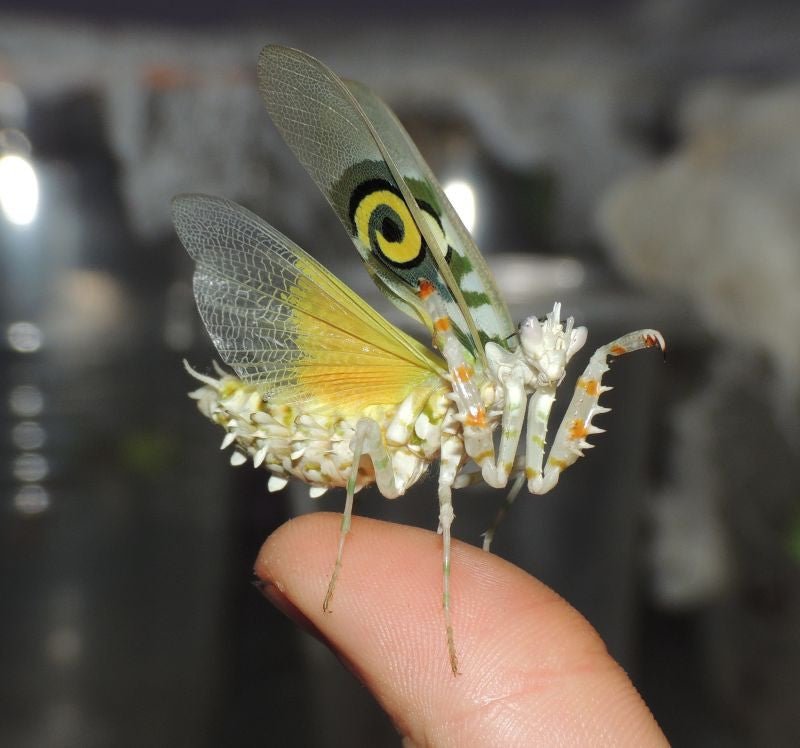
The spiny flower mantis, a captivating creature of nature, expertly camouflaged among blossoms, beckons observers to delve into its mysterious world. Adorned with spikes resembling petals, this master of disguise mesmerizes with its delicate beauty. As stealthy predators, they strike with lightning speed, embodying the art of ambush with precision. Discover the secrets of the mesmerizing spiny flower mantis, a true marvel in the realm of insects.
The Fascinating World of the Spiny Flower Mantis
Welcome to the enchanting world of the spiny flower mantis! These incredible insects are a sight to behold, with their unique appearance and fascinating behaviors. Let’s delve into the amazing life of the spiny flower mantis and uncover the secrets of this captivating creature.
What is a Spiny Flower Mantis?
The spiny flower mantis, also known as Pseudocreobotra wahlbergii, is a species of praying mantis that is native to Southern and Eastern Africa. These remarkable insects are named for their striking resemblance to flowers and their spiky, leaf-like limbs that help them blend in seamlessly with their surroundings.
Physical Characteristics
One of the most distinctive features of the spiny flower mantis is its vibrant coloration. These insects can come in various shades of pink, green, and brown, mimicking the appearance of petals and leaves to camouflage themselves from predators and prey. Additionally, their long, slender bodies and delicate limbs make them agile hunters in the wild.
Habitat and Distribution
Spiny flower mantises can be found in a variety of habitats, including grasslands, forests, and even urban gardens. They prefer warm, humid climates and are most commonly spotted in regions with abundant plant life. These insects are expert ambush predators, waiting patiently for unsuspecting insects to come within striking range.
Behavior and Diet
Spiny flower mantises are carnivorous insects that primarily feed on other insects such as flies, crickets, and moths. They are well-equipped for hunting, with their sharp forelegs that can grasp and immobilize their prey in the blink of an eye. These mantises are known for their patient stalking behavior, waiting motionlessly for hours until the perfect moment to strike.
Life Cycle and Reproduction
Like other praying mantises, spiny flower mantises undergo incomplete metamorphosis. Females lay eggs in protective cases called oothecae, which are attached to twigs or plant stems. The young nymphs hatch from these eggs and resemble miniature versions of the adult mantises. As they grow, they molt several times, shedding their exoskeletons to accommodate their increasing size.
Interesting Facts About Spiny Flower Mantises:
- Despite their delicate appearance, spiny flower mantises are fierce predators capable of capturing prey much larger than themselves.
- These mantises have excellent eyesight, allowing them to detect even the slightest movements of their prey.
- Spiny flower mantises are solitary insects and only interact with others during mating.
Conservation Status
While spiny flower mantises are not currently considered endangered, their populations are vulnerable to habitat loss and pesticide use. It is important to protect their natural habitats and preserve biodiversity to ensure the continued survival of these remarkable insects.
How You Can Help:
By creating a welcoming environment for insects in your garden or local green spaces, you can support spiny flower mantis populations and other beneficial insects. Avoid using harmful pesticides and opt for eco-friendly gardening practices to promote a healthy ecosystem for these fascinating creatures.
In conclusion, the spiny flower mantis is a captivating insect with a remarkable blend of beauty and ferocity. By learning more about these unique creatures and appreciating their important role in the ecosystem, we can contribute to their conservation and ensure that future generations have the opportunity to marvel at the wonders of the natural world.
Thank you for joining us on this journey into the world of the spiny flower mantis. May these enchanting insects continue to inspire awe and wonder in all who encounter them!
Spiny Flower Mantis Overview, compared to Orchids and Banded: the wonderful world of flower mantises
Frequently Asked Questions
What is the scientific name of the spiny flower mantis?
The scientific name of the spiny flower mantis is Pseudocreobotra wahlbergii.
What is the size range of a spiny flower mantis?
The spiny flower mantis typically ranges in size between 1.5 to 2 inches as an adult.
What is the habitat of the spiny flower mantis?
The spiny flower mantis is native to various regions of Africa and is commonly found in grasslands, shrublands, and forested areas.
How does the spiny flower mantis hunt for prey?
The spiny flower mantis is an ambush predator that camouflages itself among flowers or vegetation, waiting for unsuspecting prey to come near, then swiftly striking with its spiked forelimbs.
Can the spiny flower mantis be kept as a pet?
Yes, the spiny flower mantis is a popular choice among insect enthusiasts as a pet due to its unique appearance and relatively easy care requirements.
Final Thoughts
In conclusion, the spiny flower mantis is a fascinating insect known for its unique appearance and predatory behavior. With its thorny projections and remarkable camouflage abilities, the spiny flower mantis captivates observers and researchers alike. Its adaptation to mimic flowers showcases the incredible diversity of nature’s evolutionary strategies. By studying and appreciating the spiny flower mantis, we gain valuable insights into the intricate balance of symbiosis and predation in the insect world. This extraordinary creature serves as a reminder of the endless wonders waiting to be discovered in the natural world.






